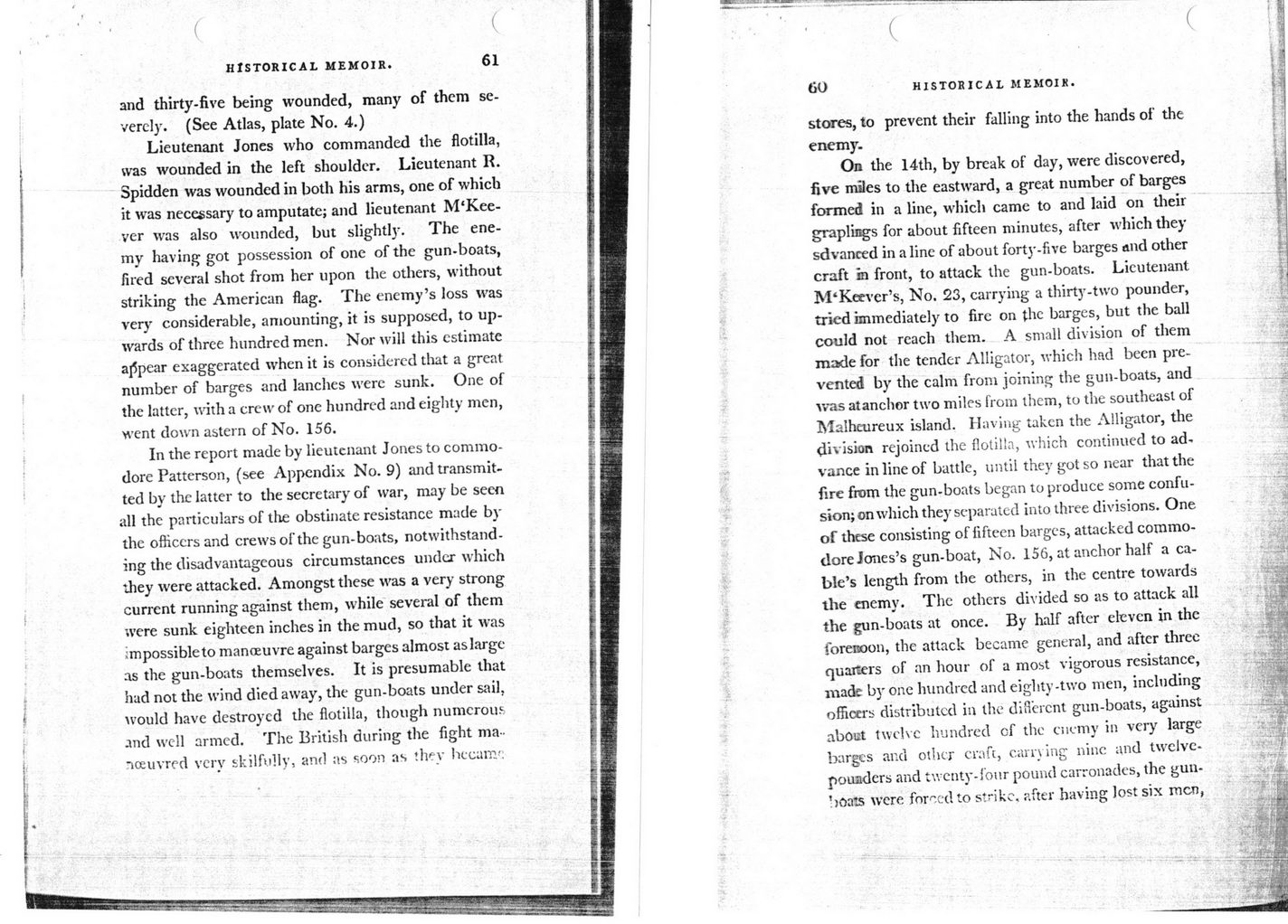This text was obtained via automated optical character recognition.
It has not been edited and may therefore contain several errors.
HISTORICAL MEMOIR. 61 and thirty-five being wounded, many of them severely. (See Atlas, plate No. 4.) Lieutenant Jones who commanded the flotilla, was wounded in the left shoulder. Lieutenant R. Spidden was wounded in both his arms, one of which it was necessary to amputate; and lieutenant M?Kee-ver was also wounded, but slightly. The enemy having got possession of one of the gun-boats, fired several shot from her upon the others, without striking the American flag. The enemy?s loss was very considerable, amounting, it is supposed, to upwards of three hundred men. Nor will this estimate appear exaggerated when it is considered that a great number of barges and lanches were sunk. One of the latter, with a crew of one hundred and eighty men, went down astern of No. 156. In the report made by lieutenant Jones to commodore Patterson, (see Appendix No. 9) and transmitted by the latter to the secretary of war, may be seen all the particulars of the obstinate resistance made by the officers and crews of the gun-boats, notwithstanding the disadvantageous circumstances under which ihey were attacked. Amongst these was a very strong current running against them, while several of them were sunk eighteen inches in the mud, so that it was impossible to manoeuvre against barges almost as large as the gun-boats themselves. It is presumable that had not the wind died away, the gun-boats under sail, would have destroyed the flotilla, though numerous and well armed. The British during the fight manoeuvred vcrv skilfully, and as soon as they lucany: ( ( 60 HISTORICAI MEMOIR. stores, to prevent their falling into the hands of the enemy. On the 14th, by break of day, were discovered, five miles to the eastward, a great number of barges formed in a line, which came to and laid on their graplings for about fifteen minutes, after which they sdvanced in a line of about fort}--five barges and other craft in front, to attack the gun-boats. Lieutenant M?Keever?s, No. 23, carrying a thirty-two pounder, tried immediately to fire on the barges, but the ball could not reach them. A small division of them made for the tender Alligator, which had been prevented by the calm from joining the gun-boats, and was atanchor two miles from them, to the southeast of Malheureux island. Having taken the Alligator, the division rejoined the flotilla, which continued to advance in line of battle, until they got so near that the fire from the gun-boats began to produce some confusion; on which they separated into three divisions. One of these consisting of fifteen barges, attacked commodore Jones?s gun-boat, No. 156, at anchor half a cable?s length from the others, in the centre towards the enemy. The others divided so as to attack all the gun-boats at once. By half after eleven in the forenoon, the attack became general, and after three quarters of an hour of a most vigorous resistance, made by one hundred and eighty-two men, including officers distributed in the different gun-boats, against about twelve hundred cf the enemy in very large barges and other craft, earning nine and twelve-pounders and twenty-four pound carronades, the gun-?)Oats were forced to strike, after having lost six men,

Battle of 1814 61